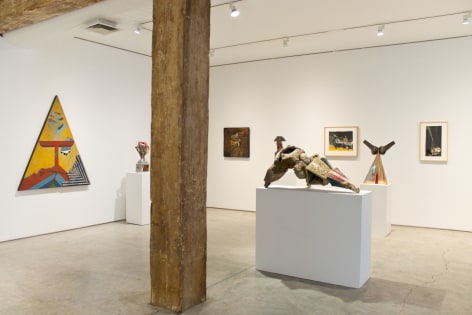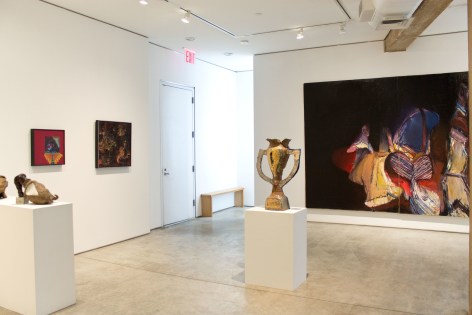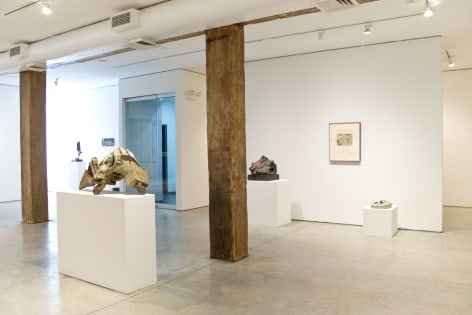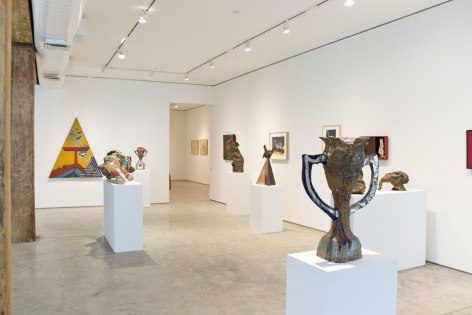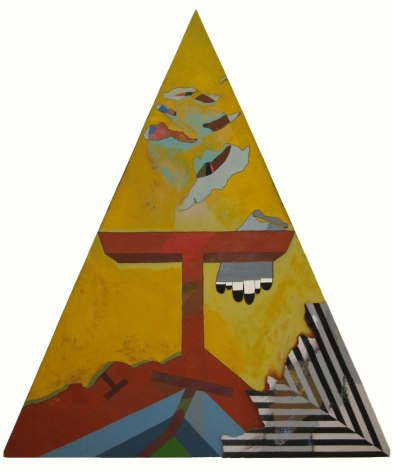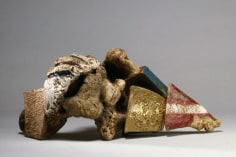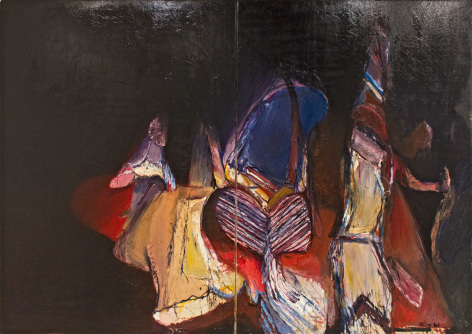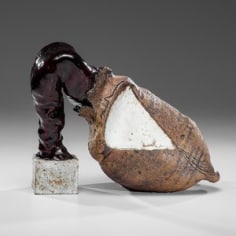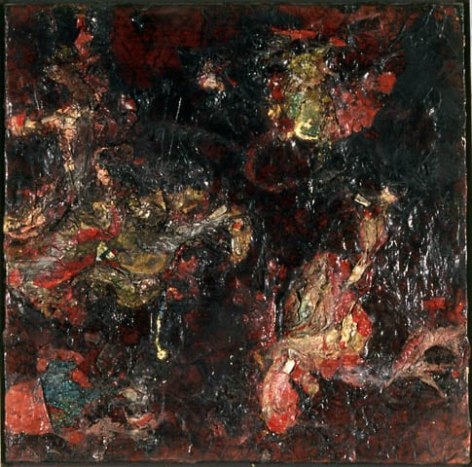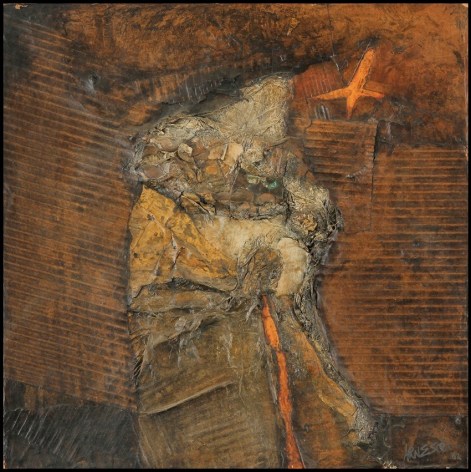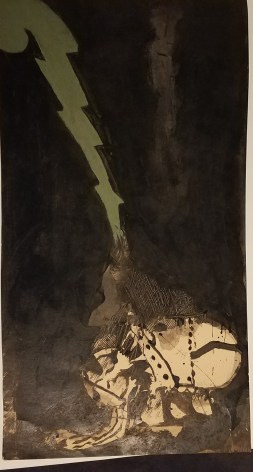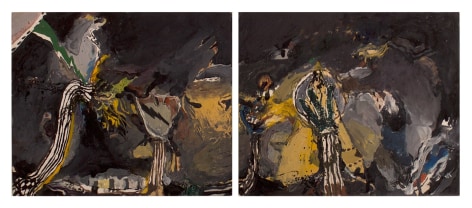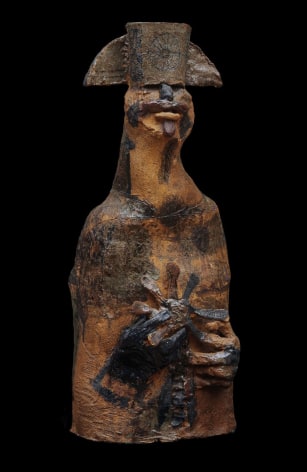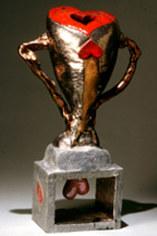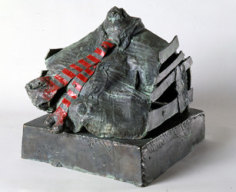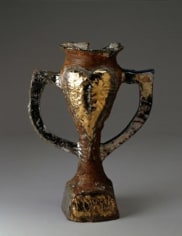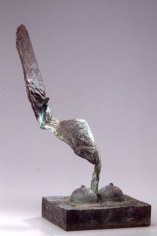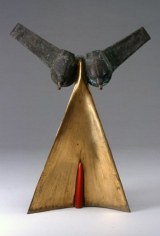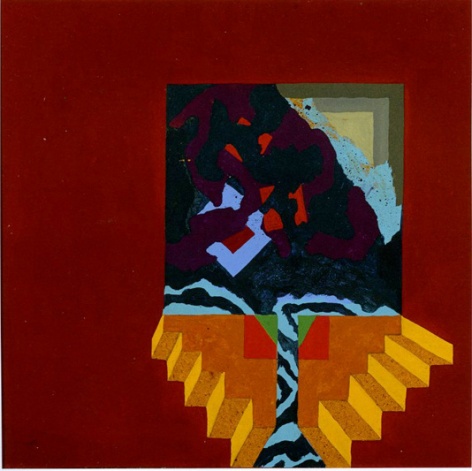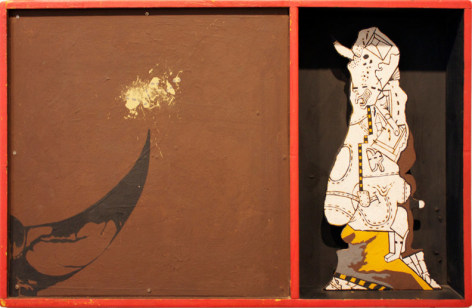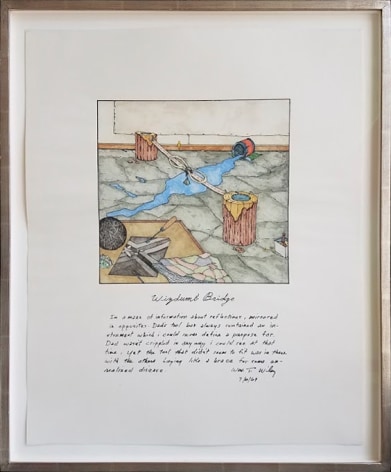During the month of June the George Adams Gallery will present an exhibition of rarely seen works from the 1960’s by Robert Arneson and William T. Wiley. The exhibition will feature surrealist and proto-Funk work, including ceramics, collages, and unique bronzes by Arneson; paintings, works on paper and, most notably, a ceramic sculpture and large abstract canvas by Wiley. With a focus on their early development, many of the pieces are highly experimental and yet provide context for their subsequent careers.
Robert Arneson and William T. Wiley were central figures in the emergence of the evolving art scene that flourished in the Bay Area in the late 1950’s and early 1960’s. As key faculty in the recently formed art department at the University of Davis (both were hired in 1962), Arneson and Wiley's enthusiastic and unorthodox embrace of irony and punning, visually and literally, were central in the establishment of an uniquely Californian attitude, counter to the one fostered by the East Coast intelligentsia. The open and experimental atmosphere at Davis, with its roster of young faculty, aided in crystallization of a new type of art making and was the basis of the ‘Funk’ movement.
In the late 1950’s Arneson and Wiley were still working in the prevalent, expressionistic manner of the time as exemplified by the sculpture of Peter Voulkos and the painting of Hassel Smith. With the influence of abstract expressionism on the wane, many artists were looking for alternative modes and transgression remained a driving motivation. By the early 1960’s Arneson had made the transition from carefully crafted, utilitarian ceramics to non-functional three-dimensional forms that were increasingly pop-inflected and infused with sexual content. Similarly, Wiley began introducing imagery into his heavily impastoed abstractions, and making assemblages inspired in part by his Beat contemporaries and a personal interest in Zen thought. Despite these different trajectories, both were consciously looking to transform their art into a more personal discourse.Along with Bruce Conner, Roy De Forest, Peter Saul, they maintained astance that was a direct challenge to the ascendant - and New York-centric - established norms of "good taste," a stance that came to define the art of the Bay Area for the next three decades.

